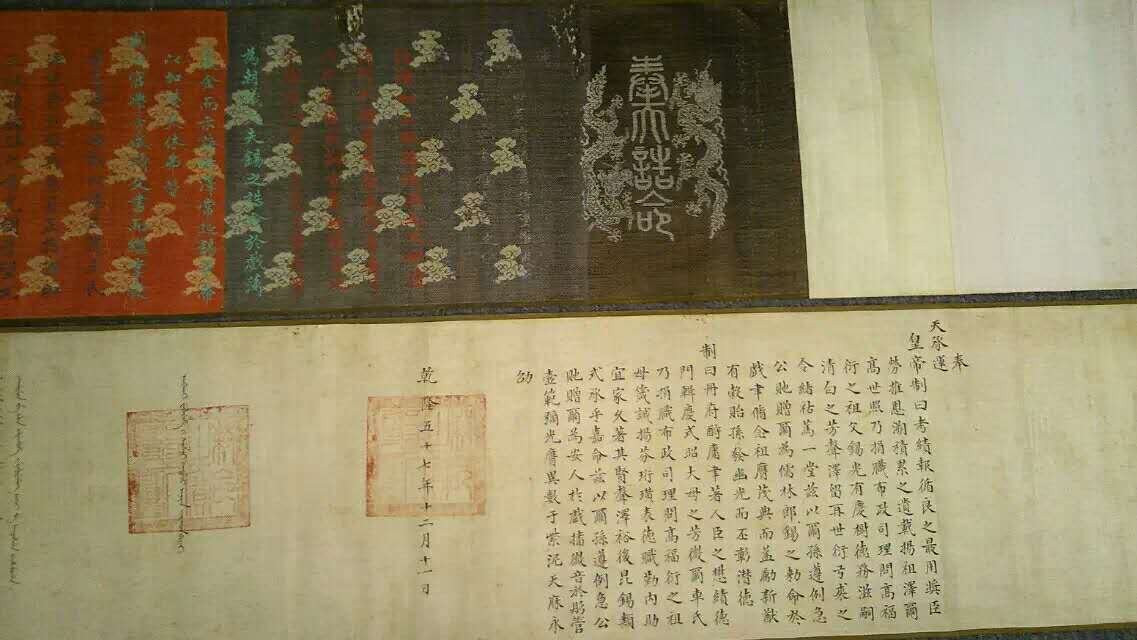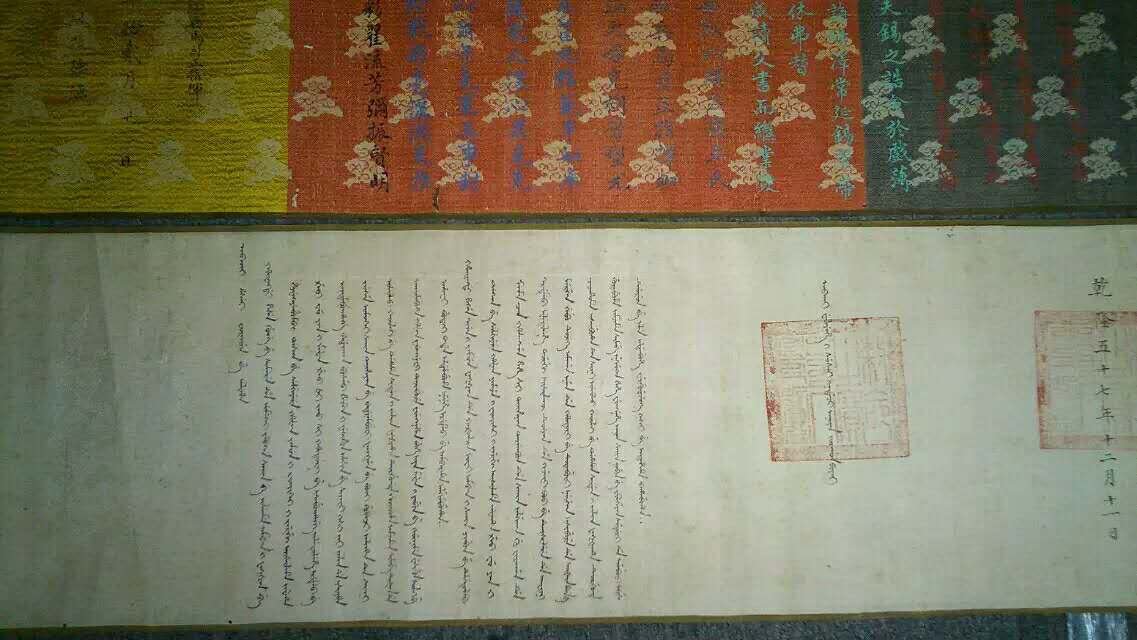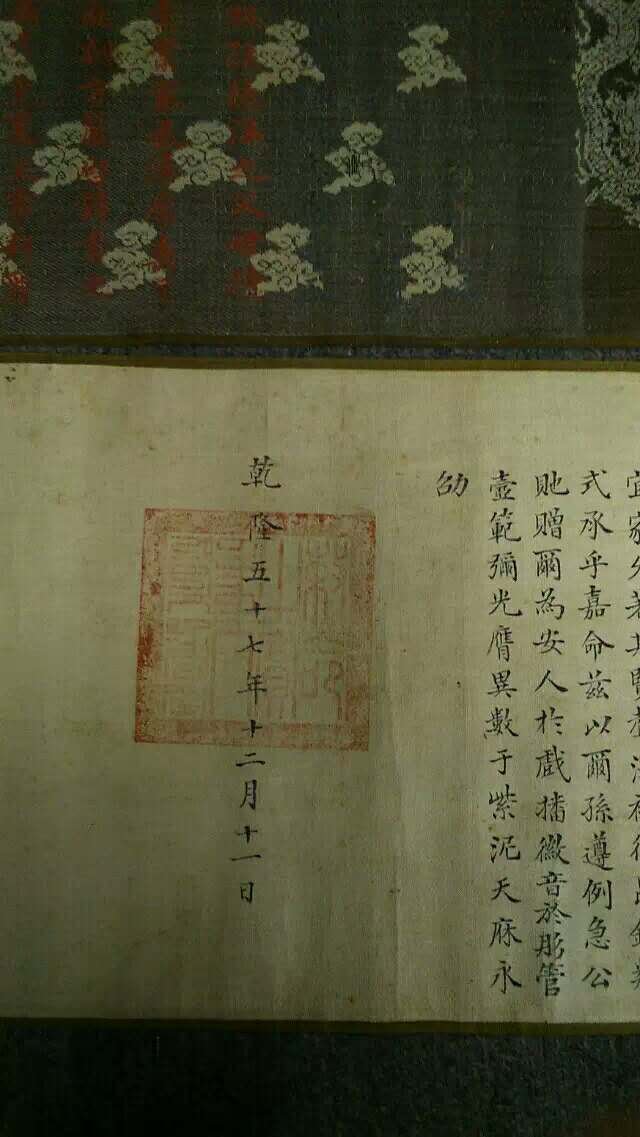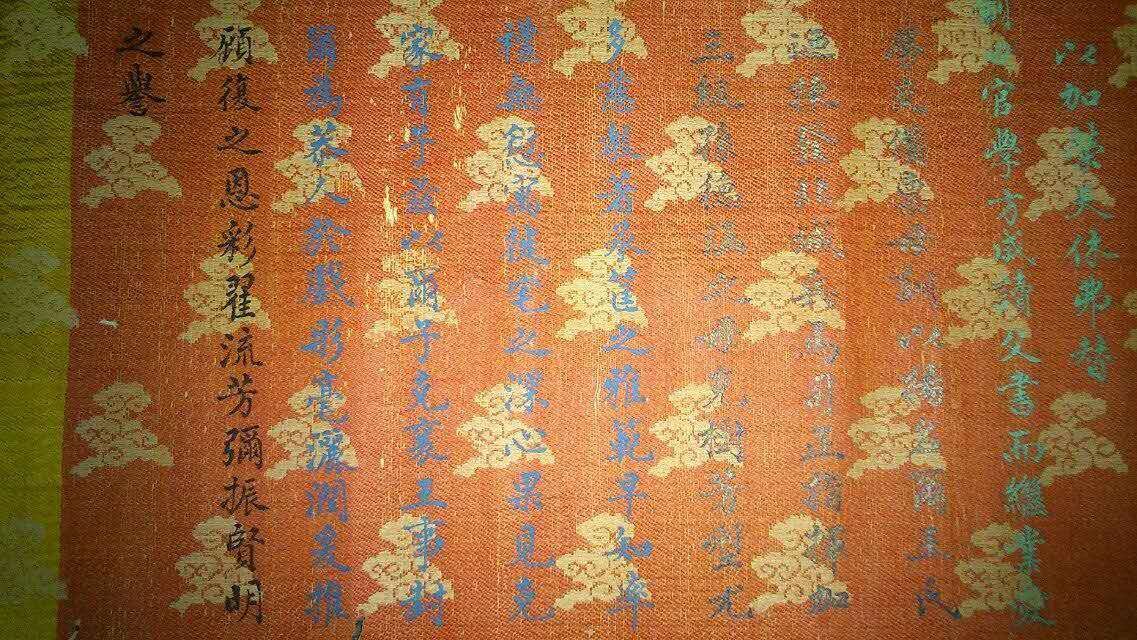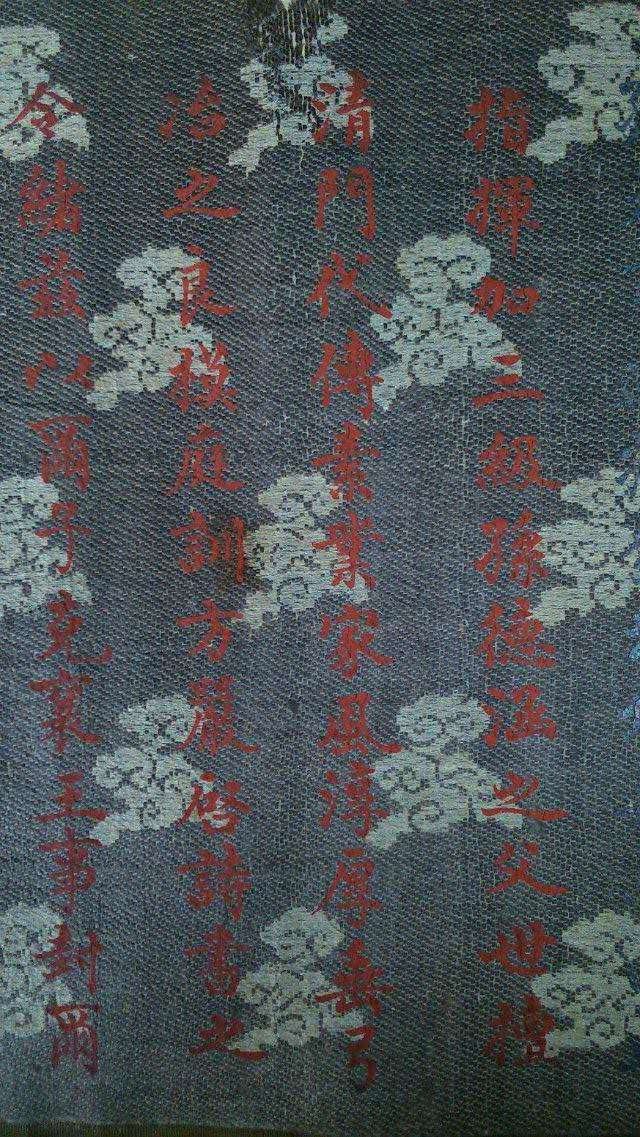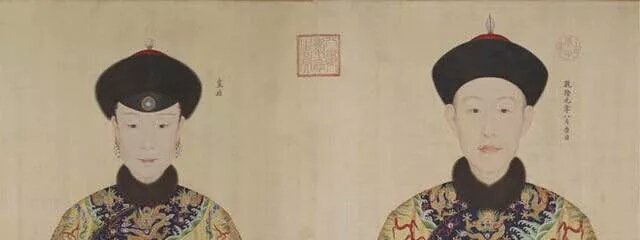
圣旨,顾名思义,就是圣上(皇帝)下发的旨意。
我把它理解为封建时期的红头文件。
"奉天承运皇帝诏曰"
这句话我们一点都不陌生,从小到大在电视剧里都不知道听了多少回了对不对。
但这里面有几点我们一直被误导了很多年。
Imperial edict, as the name implies, is the will of the Saint (the emperor).
And I understand it as a red-headed document of the feudal period.
"It's the God's wiliness and the emperor's command that", Chinese are familiar with this sentence since it always appears in TV series from their childhood.
But there are a few things we have been misled for many years.
一、断句。
电视剧里都是把它读成"奉天承运,皇帝诏曰。"
正确应该是"奉天承运皇帝,诏曰。"
意思是:奉行天命的皇帝说的话。
Firstly, punctuation.
In TV drama it is to read it as "It's the God's wiliness and the emperor's command that".
Correctly it should be "The emperor is following God’s wiliness, he commands".
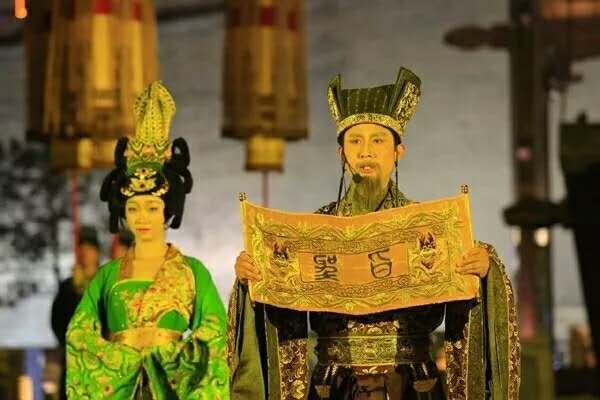
二、电视剧里不管是册封妃子还是抄家甩入冷宫,圣旨一出,那扯高气扬的公公总是一脸傲娇地宣读"奉天承运,皇帝诏曰——"
但在现实中,"诏曰"是很少用到的,它一般只在皇帝驾崩、册封太子或者对外宣战时用。
除了"诏",还有"制"和"敕",什么类型对应用什么字眼,这里面十分讲究。
"诏曰"一般为皇帝口述旁人代写;
"制曰"一般为皇帝亲手所写。
在这里,想起一件趣事,那就是有一次上课,有个同学提问"为什么古人的毛笔字写得那么好?"
老师答曰:"写丑了马上拖出去砍头,换成你还敢不敢不写好?"
Secondly, in the TV series, whether it is bestowed on her the title of imperial concubine or confiscate the property, the arrogant eunuch always reads "It's the God's wiliness and the emperor's command that".
But in reality, the academic Chinese word "Chao" for "command"is rarely used and it is generally only in the emperor’s funeral, canonized Prince or declared war.
In addition to "Chao", there are "Zhi" and "Chi".
All of them have the meaning of “command” and they depend on the situations. it really matters that what type of application for what words.
"Chao" the general dictation of the emperor and then others writes down;
"Zhi" is generally written by the emperor personally.
Here, I remember an interesting thing that in a class, a classmate asked "Why do the ancients can write so beautiful handwriting?"
The teacher answered "If handwriting is ugly, then he will immediately be dragged out and killed, so you dare not write neat? "
三、电视剧里那些圣旨都是金黄色而且很短小的,直接两手拉开就读,但实际上,诏书最长的有五米,最短的也约有三米。
颜色也并非单调的金黄色,而是分为三色、五色和七色(三彩、五彩、七彩),颜色与领旨官员的官衔挂钩,七色为最高级。
这些颜色并不是染上去的,而是由不同颜色的彩绫从头到尾一口气织就而成的。
既然是织成的,皇帝那么爱美且讲究的人,那肯定会要求弄点底纹上去的,好显得皇家气派、雍容华贵嘛。
图案一般会有仙鹤、卷云或狮子等。
但也并非每个人都有这待遇,比如颁发给五品以下的官员的诏书就是无底纹的纯白绫。
这些底纹除了美观以外,还具有防伪功能,跟我们今天的防伪水印差不多道理。
没办法啊,朕也怕有人假传圣旨对不对,这些事,谁知道呢~
Thirdly, in the TV series, those imperial decrees are golden and very short, so eunuch can directly open it and read.
But in fact, the longest decree is five meters and the shortest is about three meters.
Color is not monotonous golden yellow, but divided into three colors, five colored and seven colors (three colors, multicolored, colorful).
The color is related to the official title of the officials who receive it, seven colors for the most senior.
These colors are not dyed up but weaved by the different colored cloth from beginning to end.
Since it is woven and the emperor love beauty, it will certainly ask someone to add some shading up so that it is the royal style, grace and elegance Well.
Patterns generally have cranes, cirrus or lions.
But not everyone has this treatment, such as issued to the officials of the five items below the decree is a shading pure white cloth.
These shades in addition to beauty, but also has anti-counterfeiting function, similar to our today's watermark.
For the emperor, he is also afraid of someone fake biography for the right, these things, who knows it ~
以上主要是清代圣旨的款式,每个朝代的圣旨都不一样。
谢谢你耐心看到这里,接下来是彩蛋——
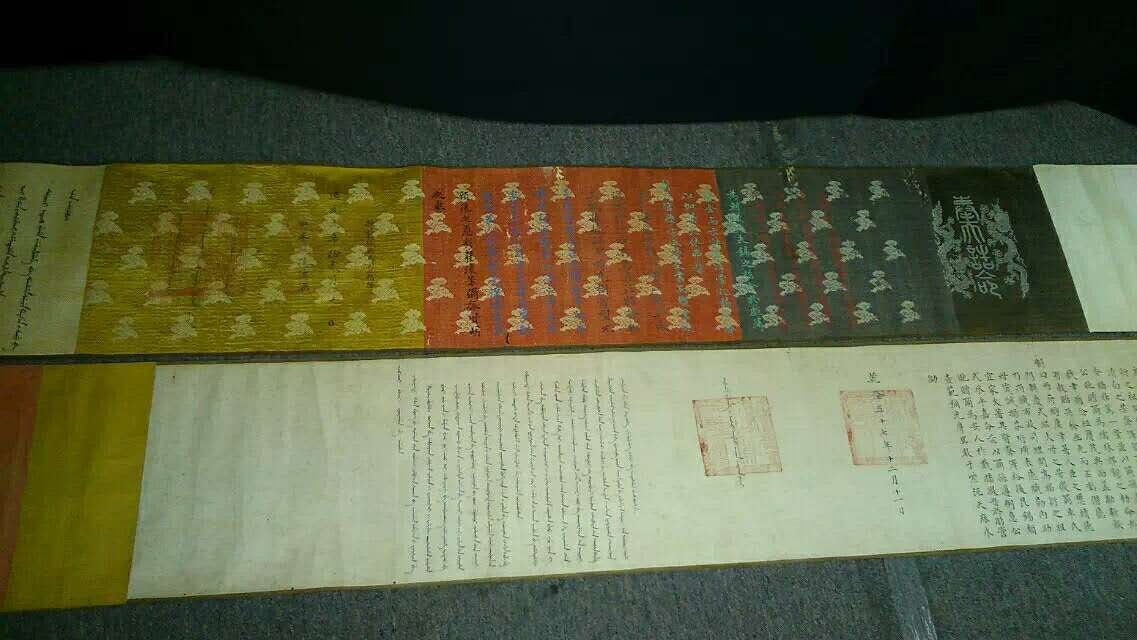
一台湾藏友捎了两卷圣旨过来。我认真拍下了细节,跟大家一起分享——
其中有一卷是"道光元年"的,另外一卷是"乾隆五十七年"。
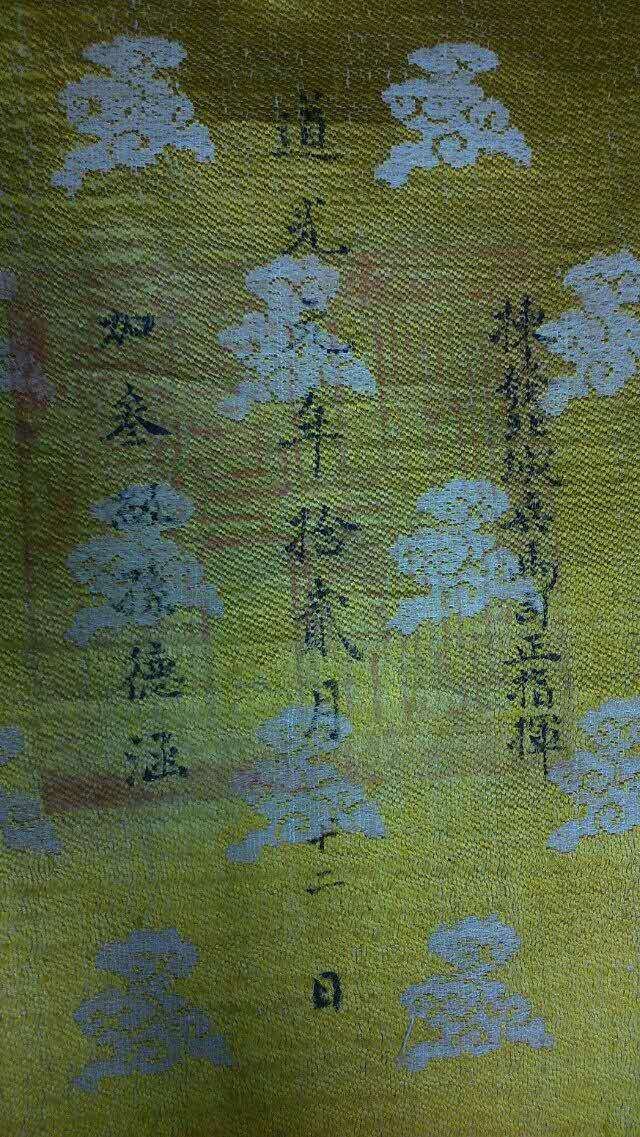
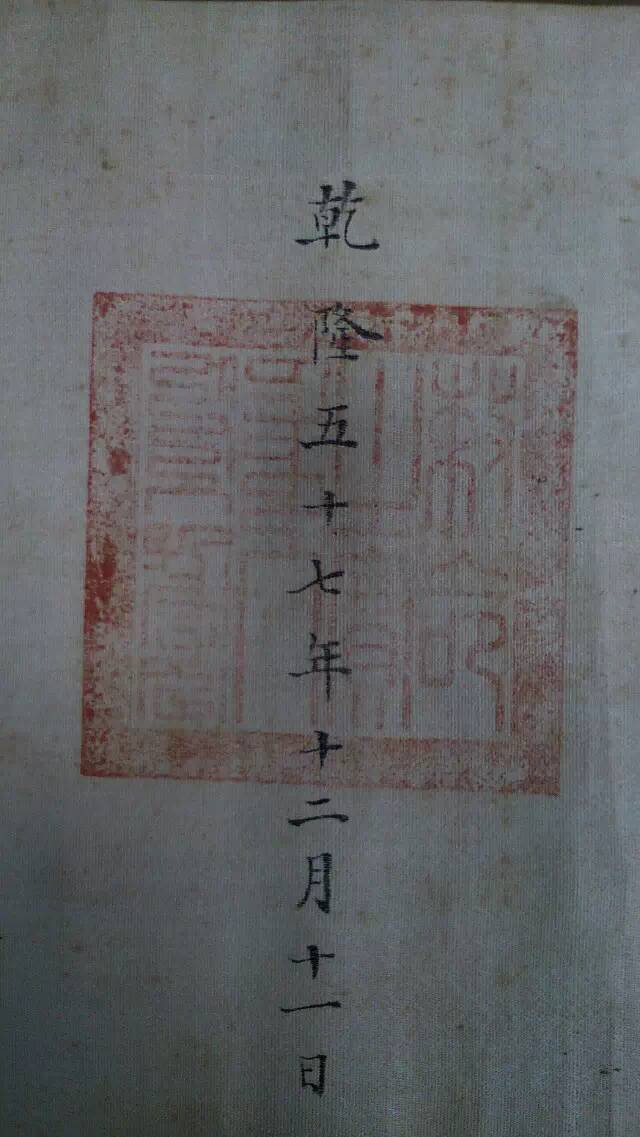
道光元年这一卷诏书为三彩,乾隆五十七年为纯白绫,从而可以大约判断出接旨官员当时的官衔等级。
从底纹上来看,三彩的织有祥云图案,而白绫的并没有。
在防伪方面有一个格式要求,那就是圣旨开头的第一个字必须写在右边第一朵祥云上。
Above it is mainly the style of Qing Dynasty imperial decree and in each dynasty the imperial decree is not the same.
Thank you for your patience to still read here, the next is the bonus scene——
A collector from Taiwan brought two volumes of decree.
I took the details carefully and shared with everyone here.
One of which was "the first year of Daoguang" (1821 A.D.) and the other was "fifty thousand seven years of Qianlong"(1790 A.D.).
The Daoguang one is three-color and the Qianlong one is the pure white cloth which can be judged about the official title of the official rank.
From the view of shading, the three-color one is woven with a cloud pattern while the white one has no cloud.
There is a format in the security requirements, that is the beginning of the holy order of the first word must be written on the right side of the first clouds.
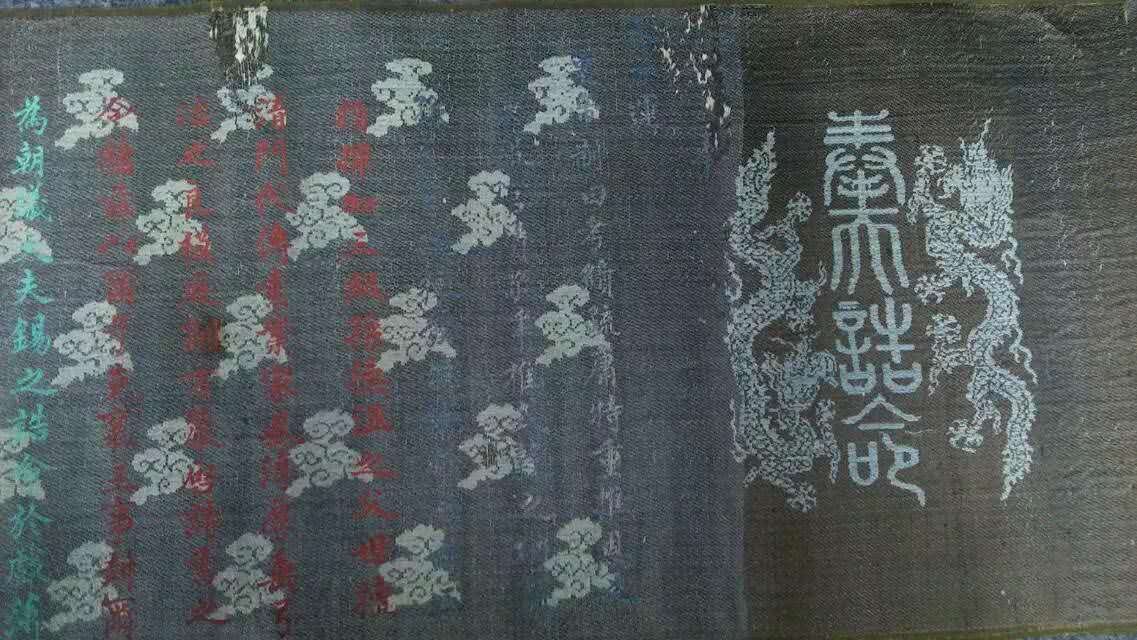
可以看到这两卷圣旨上的文字是汉满合璧,汉文行款从右至左,满文则是从左至右,内容合于中幅而书日期。
日期上钤印"敕命/诰命之宝"。
"诰命"用于授予一至五品官衔之人;六品及以下为"敕命"。

从长度上来看,也并非像电视剧里演的那么短,想要展开来宣读,一个人大概是不够的。
诏书里开头均为"奉天承运皇帝制曰"。 看,并不像电视剧里那样用到"诏曰"对不对?
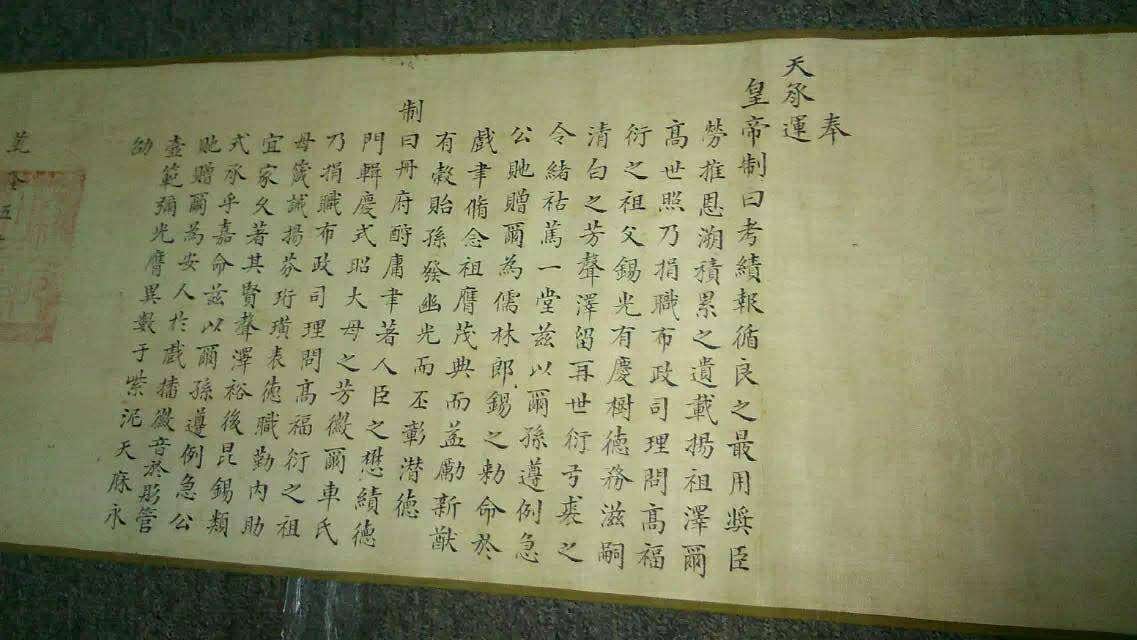
有句话叫"尽信书不如无书",同理,电视剧,看了笑过就好。
You can see the two volumes of the decree , the text is full of Chinese and Manchu alphabet.
Chinese section of the line from right to left, Manchu is from left to right.
From the length, it is not like so short in the drama.
Probably it is too long for a person to hold and read.
The same reason, the TV drama, not true as reality, just looked like a smile.
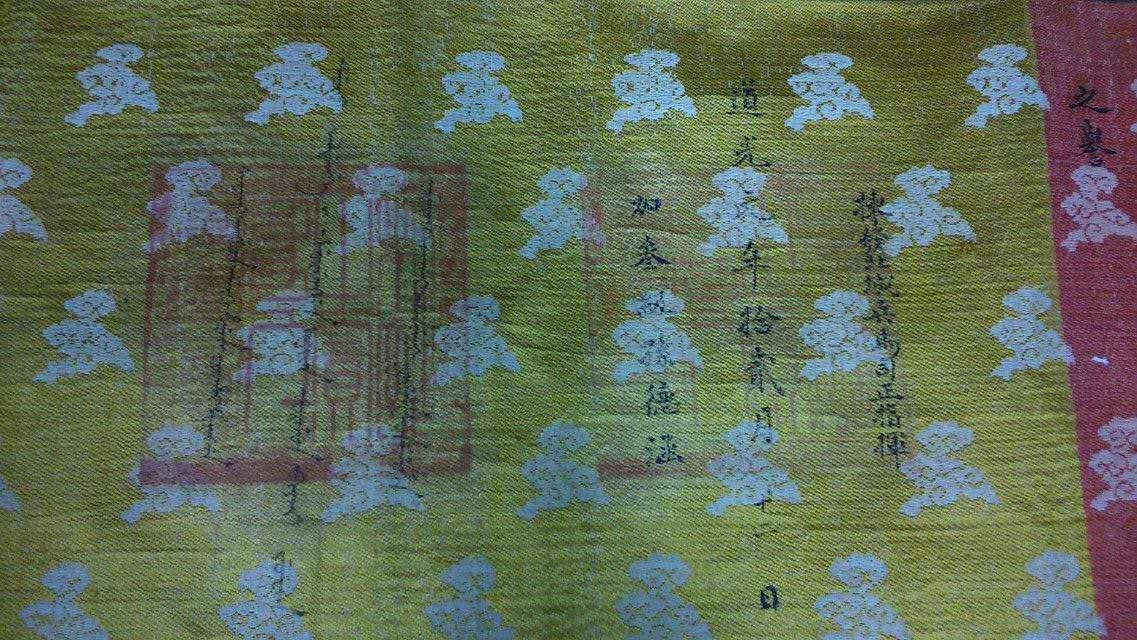
在小小一卷"红头文件"里,可以窥探出一个国家的国运兴衰。
国运昌盛,它们绫罗加身,富丽堂皇,一丝寸缕都代表着至高无上、神圣不容侵犯。
而到了清代末期,光绪皇帝颁发的圣旨不再由名贵彩绫织就,而是被粗糙的麻布所替换。
到了溥仪时代,"圣旨"一词已不复存在,而是变成了"指叙令",昔日那些精美的祥云底纹,更是被"满洲帝国"四字所替代。
In a small volume of "red-headed document", you can glimpse a country's national transit rise and fall.
When in National transport prosperity, they are lofty body, magnificent, a trace of strands are representative of the supreme, sacred inviolable.
And to the late Qing Dynasty, those issued by the Emperor Guangxu are no longer by the noble color of the edible, but was replaced by rough linen.
To the Pu Yi era, "imperial decree" has ceased to exist but into a "refers to the narrative".
